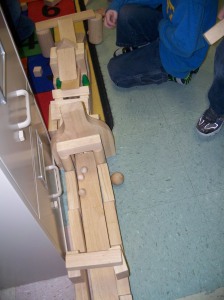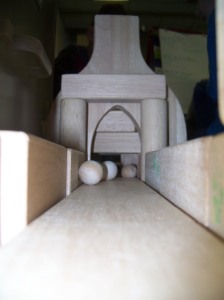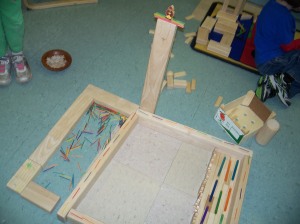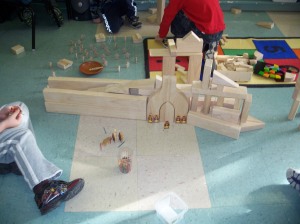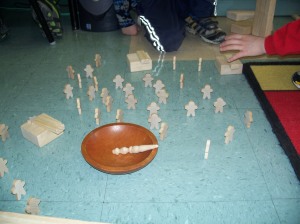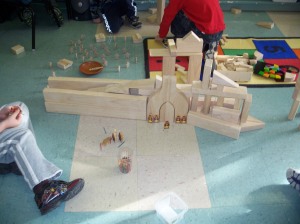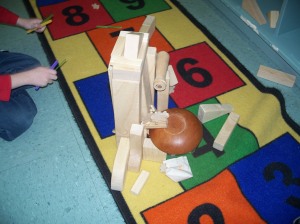I am a big fan of block building. I find I am always amazed at the intricacies in the building structures that the children create. We don't begin our block building with big ornate fortresses. We generally begin small, simple. As we gain confidence and experience we notice how our block building expands. It occurred to me one day, that the stages of block building seem similar to the stages of learning to read. Both are a process. Both have a basis laying a foundation before you move on to the next level.
In the first stage of block play, children carry blocks around. They become accustomed to the blocks and what they can do. In the second stage, children are building rows and towers. There is repetition in block building, just as there is repetition in the beginning of the reading process. Children are becoming familiar with books, with words, with letters. Just as children begin to understand what a block is used for in the first two stages of block play, in the first stage of reading, children understand what letters, words, pictures, and books are for.
In the third stage of block play, children begin to bridge. They will take two blocks and connect them with a third. The same is true with the second stage of reading. Children begin to "connect the blocks" by applying the strategies and skills they have learned in the first stage.
In the fourth stage of block play, children begin to make enclosures, they enclose space. In the third stage of the reading process children are responding to the texts. So, just as children begin to enclose the space when playing with blocks, when they are reading they are taking the information they have learned from the text and are creating ways to build on that.
In the fifth stage of block play, patterns and symmetry begin to appear. Children enjoy making elaborate buildings, they enjoy exploring with blocks and adding other accessories to their play. In the fourth stage of the reading process children are exploring with the words. They are learning new vocabulary, new skills, adding new "accessories" to their reading.
In the final stage of block play, children begin to name their structures. They begin to use them for dramatic play. They take what they have learned with the blocks and begin to apply that knowledge to their play. The same can be said for the final stage of the reading process. Children take the information they have learned from their reading and it begins to impact them in other ways. They may find information they have read about leads them to more research on the same topic, or they may enjoy one author so much they wish to read more of their work.
Sometimes when adults look at children when they are at play, we may think how "cute" they are. We may wish we could be young again so we could, "just play". But the reality of play is far more complex than the words, "cute" or "just". "Play is a child's work," so Maria Montessori said. Play is learning. Learning is a process. We don't always see it happening in the moment. But one day we wake up and realize how much we have learned.
The stages of block building can be found in the book, "The Block Book", edited by Elisabeth S. Hirsch and is published by the National Association for the Education of Young Children, Washington, DC.
The stages of the reading process can be found in the book, "Literacy in the Early Grades, third edition" by Gail E. Tompkins, Pearson publishing, 2011.






